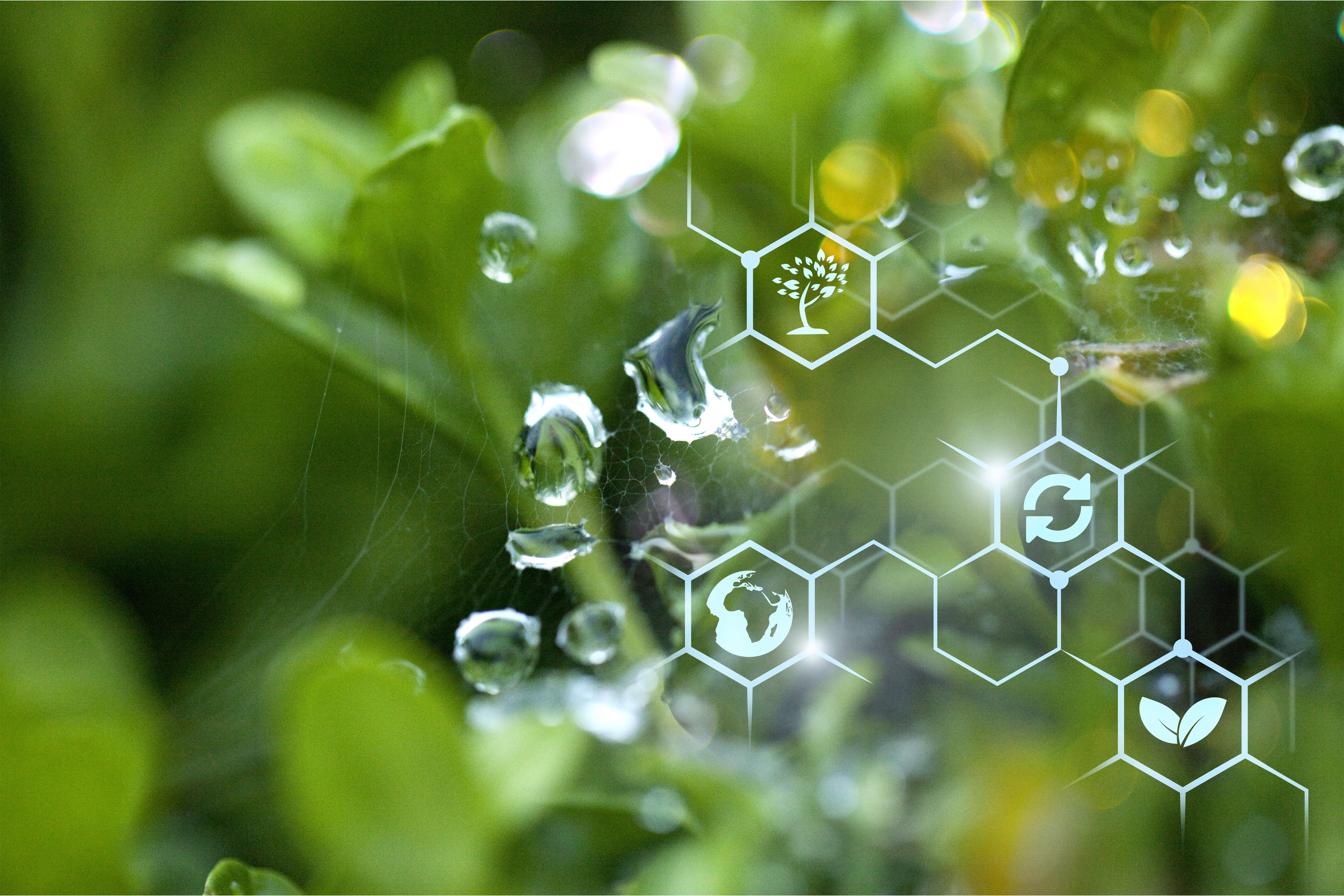Engaging in LCA processes represents a real investment for our partners because there is sometimes a mismatch between information expectations and the methods and practices in place to collect it. This reinforces the need for structuring our businesses by establishing shared standards and sharing standardised methodologies which create value and lead to concrete, credible communication aligned with the Sustainable Development Goals.
Is responsible chemistry a step towards sustainable development?

Reducing our carbon footprint, being less dependent on non-renewable energies, managing our waste better and making use of previously untapped resources… There are so many challenges forcing chemistry to reinvent itself.
Towards a more responsible chemistry?
The discipline behind concepts such as circular economy, green chemistry and eco-design, responsible chemistry intends to meet the biggest challenges of our day while reducing the risks of pollution and the harms it inflicts on our health and environment. Find out how Safic-Alcan is committed to transforming the sector as a speciality chemical distributor.
Across the world, the population is growing, ageing and improving their quality of life. However, in the context of climate change and biodiversity erosion, this increasing demand is depleting natural resources more quickly and accentuating existing resource tensions and inequalities caused by globalisation. While chemistry is already essential in our post-industrial society, these factors mean that it is also becoming a little more strategic every day.
Green chemistry, a pillar of a sustainable economy
When the concept of sustainable development emerged at the end of the 1980s, chemistry was not forgotten about. It was also focused on a “development which meets the current needs without compromising future generations’ ability to meet theirs.” The Responsible Care initiative was created in 1985 in response to this. This global charter, which Safic-Alcan has signed, also emphasises continuous improvement in terms of health, safety, quality and the environment. The term “green chemistry” appeared shortly after, with the aim of “reducing or eliminating the use and generation of hazardous substances” used in chemical activities based on 12 principles.
In line with these ambitions, the Pierre Potier prize, sponsored by two major institutions in the French chemical landscape, the Fondation de la Maison de la Chimie and France Chimie, is awarded to chemical companies who are innovating in new ways to promote sustainable development. SufactGreen, which we distribute in the USA and some European countries, were among the 2022 winners because of their development of CosmeGreenTM surfactant in the cosmetic industry.

Eco-design: focusing on eco products and processes
Contrary to what its name suggests, green chemistry encompasses phytochemistry but is not limited to it. Although bio-based molecules have a high added value, there are not enough of them to meet all our needs.
Discover bio-based products from our suppliers « Industrial Specialities »
This is why Safic-Alcan looks to strike a balance between a well-thought through supply of natural ingredients and synthetic products which protect our health and environment. Beyond this pragmatic approach to responsible chemistry, we believe that it is crucial to take a holistic view of the impact of our products.
The use of life cycle assessment allows us not to limit our vision to just reducing carbon emissions. While cumbersome and complicated, this process shows all the impacts throughout the product’s life cycle from the extraction of raw materials to its eventual recycling, without forgetting about its use, maintenance and transport.
The framework for portfolio sustainability assessment (PSA), published in 2018 by the World Business Council for Sustainability Development (WBCSD), also provides a methodology for businesses in the chemistry sector to evaluate this aspect within their portfolios.
In both cases, these are decision-making tools which help us better understand both the positive and negative impacts of products. In real terms, this can lead to more concentrated or solid formulations in the cosmetic industry which use less water, smaller packaging and are multifunctional.
In the automobile and coatings industries, it can mean making vehicles lighter or reducing the use of fossil raw materials, opting for bio-based and/or recycled substances instead, while maintaining the same performance levels.
An evolving sector with changing regulations
In recent years, many new corporate social responsibility (CSR) initiatives have emerged. This shift extends beyond the chemical industry as shown by now common saying “Reduce, Reuse, Recycle”. This is in line with the seven pillars of the circular economy and the Sustainable Development Goals (SDG) adopted by the UN in 2015. These benchmark publications allow organisations and business to use the same language and shared goals.
Regulations are also evolving, making it possible to structure and bring together organisations committed to sustainable development.
As a result, the European Commission is planning to revise the REACH regulation, which came into force on 1 June 2007, as part of the European Green Deal. Postponed until the end of 2023, this regulation change aims to better identify hazardous substances and address chemical mixtures to protect European citizens and ensure an environment free of toxic substances.
This project is part of the EU chemical strategy for sustainability and responds to the growing expectations of all shareholders. In every sector, investors, employees, clients, suppliers and consumers are demanding more transparency. The new EU CSRD directive, which will come into force in 2024, will allow companies to standardise their extra financial reporting practices.

What is the role of distribution in responsible chemistry?
As Deloitte emphasises in this note, the role of distribution is essential in the transition process in the chemical sector. In the coming years, distributors will need to review the architecture of supply chain costs and their environmental footprint. At Safic-Alcan, we believe that we are perfectly positioned to establish a “durable link” between our principals and our clients.
We are committed to better understanding our impacts and encouraging dialogue between all our partners to improve our products and solutions. This approach of collaboration and continuous improvement is essential to meet the needs and challenges in our markets and is supported by the following three pillars.
Adapting our offer
To help our clients minimise the negative impacts of their products and maximise their positive impacts, we strive to strengthen our product portfolio by collaborating with committed suppliers, offering responsible and innovative solutions. For example, some of our clients are developing ISCC+ certified bio-based products as an alternative to fossil based products.
The selection of our partners or new products are also essential factors in meeting the growing expectations in our markets. We are also developing our internal and external partnerships to promote eco-design and co-creation in innovation processes. For example, we organised a conference on eco-design in cosmetics in Paris for our French clients on 5 July 2022. This approach of partnership and collaboration creates value through innovative and responsible solutions.
Striving for more transparency
As a distributor, our role is to collect information from our suppliers which allow our clients to evaluate the environmental and societal impact of their products. This is a hard task given the complexity of some supply chains and yet essential in order to meet traceability requirements.
Engaging our suppliers
Collecting this product and LCA data lets us see that our suppliers all have varying levels of maturity regarding these issues. We believe that it is our responsibility to make space for these conversations and collaborate with our suppliers to develop a shared understanding on the sustainability aspects of the product portfolio. As a “durable link” between our suppliers and our clients, we also support their commitments to responsible and circular solutions, so we can build a more virtuous value chain together: producing better, consuming better and managing the products’ end of life better.
Conclusion
The ultimate goal behind the concept of responsible chemistry is not so much about finding the perfect equation of efficiency, price and risk reduction but rather about finding a compromise in line with businesses’ social and environmental commitments. All this needs to happen without losing sight of economic performance which is needed to fund investment in research and innovation. At Safic-Alcan, we are convinced that truly sustainable solutions can only be found if each link in the chain plays their part (chemists, researchers, distributors, manufacturers, consumers, policy makers, investors).
To find out more about our commitments and initiatives to move towards a more responsible value chain, consult our most recent sustainable development report:



